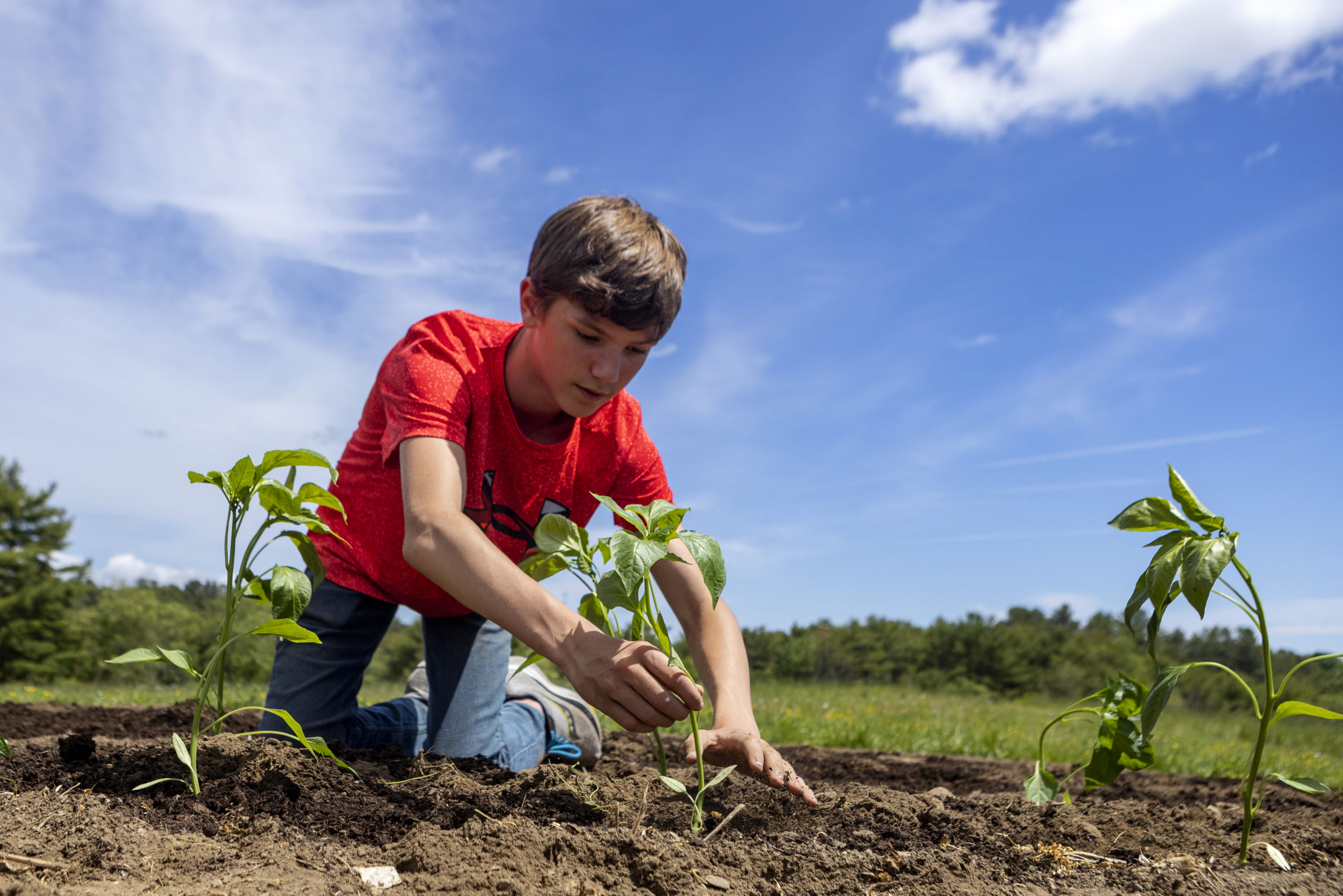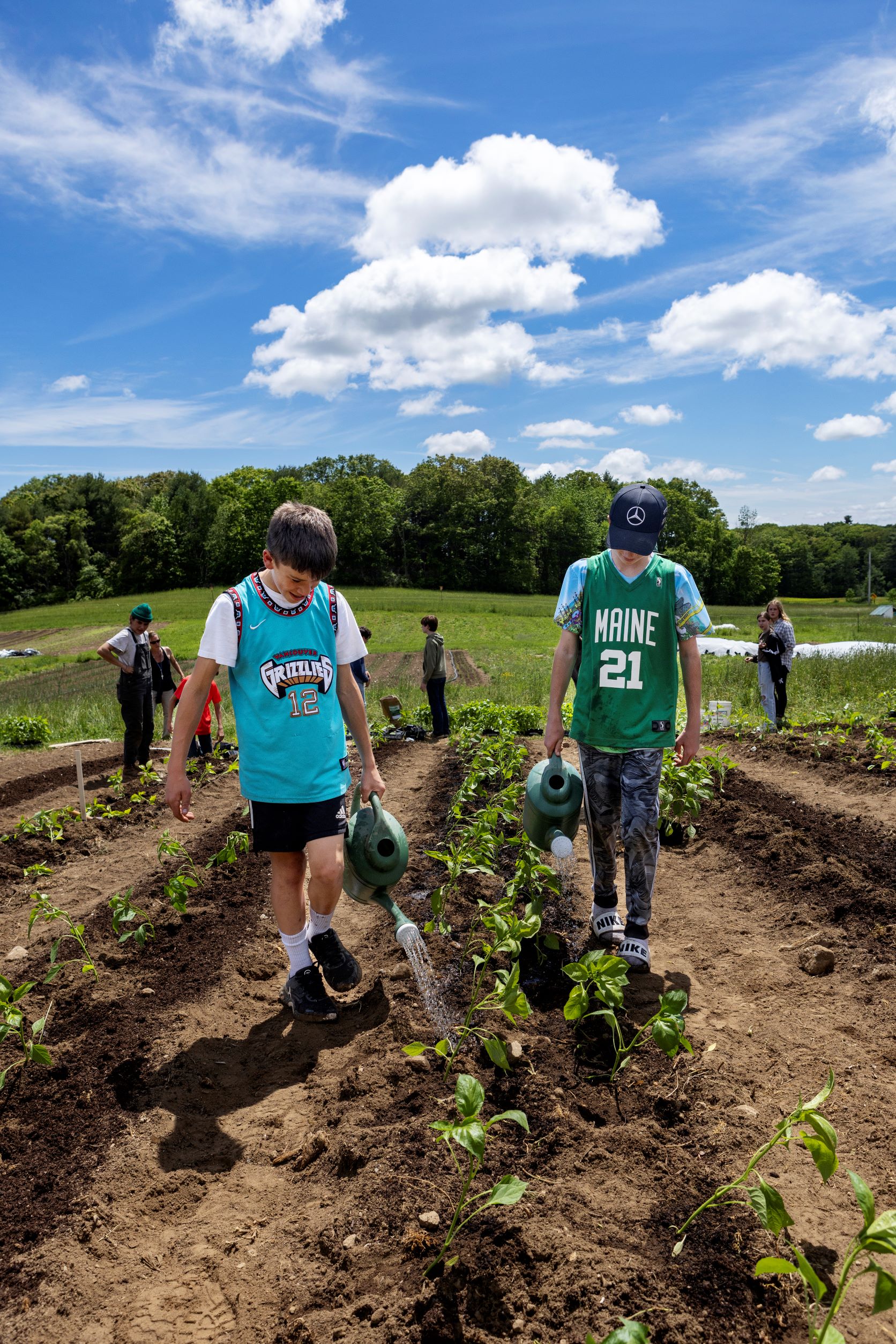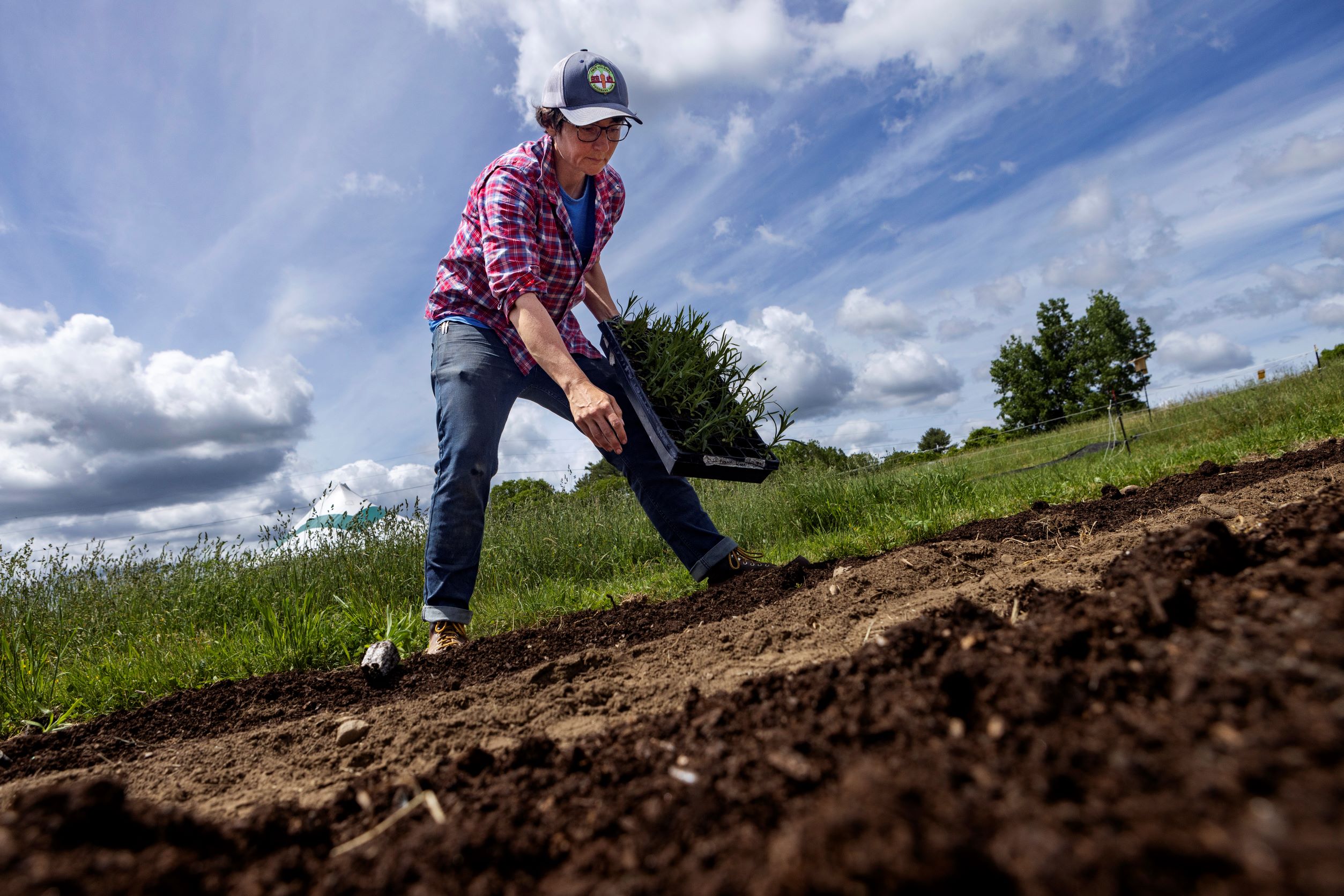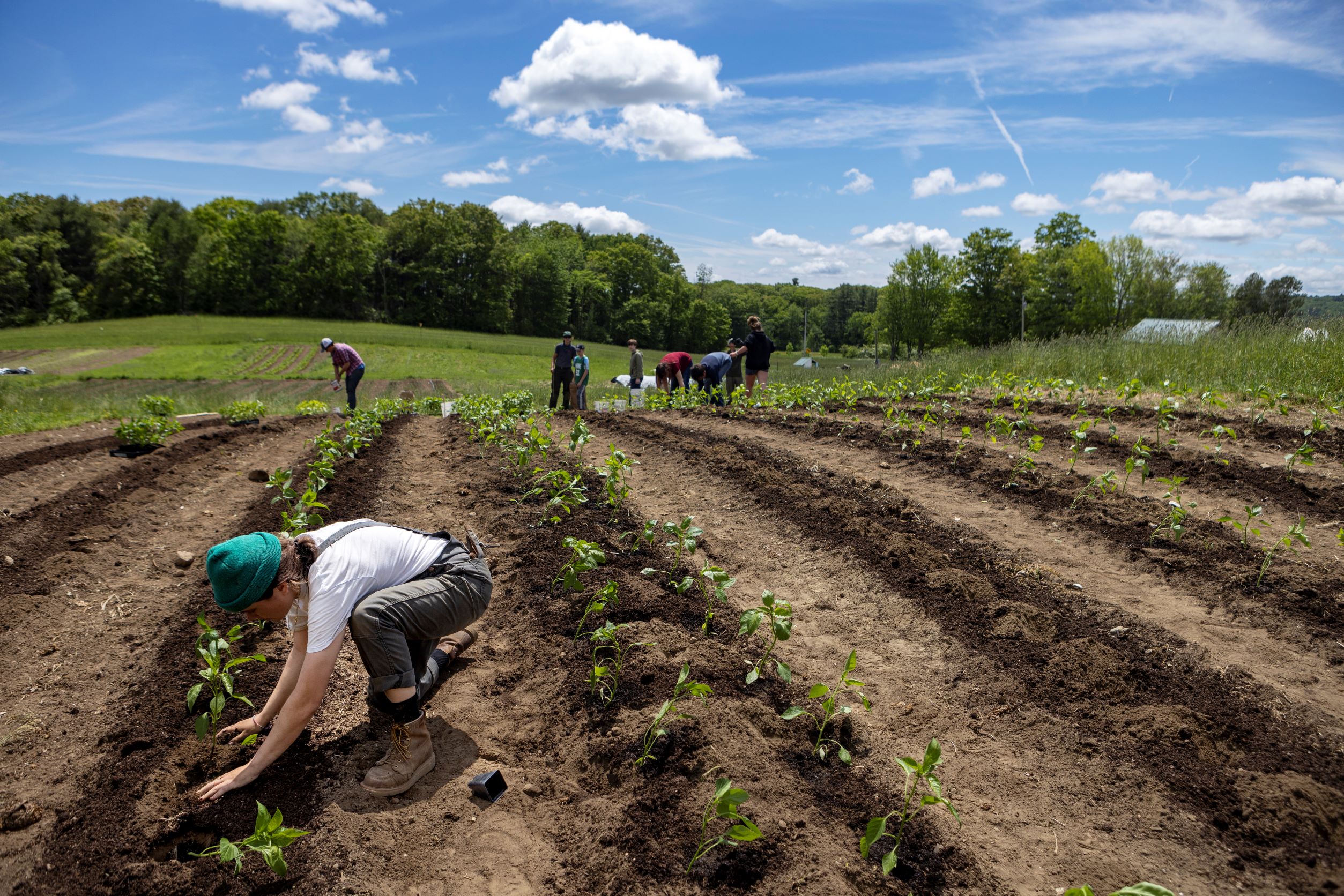Rising consumer prices are taking bigger chunks out of family budgets, but MaineCF grantees and volunteers across the state have found creative ways to make sure their neighbors have access to the food they need.
Before the COVID-19 pandemic began in March 2020, Maine's rate of food insecurity was already higher at 12.3 percent than the national average of 10.5 percent. The struggle to put food on the table worsened when people lost their jobs and pushed Maine's rate to 14-7 percent. The rate is expected to rise again after expiration of a pandemic emergency increase in Supplemental Nutrition Assistance Program (SNAP) benefits.
"Food insecurity is invisible and asking for help when we carry so much pride is sometimes a real barrier," said Megan Taft, co-founder of Twin Villages Foodbank Farm in Nobleboro and vice president of equity, diversity, and inclusion at Good Shepherd Food Bank. "During COVID-19, people lost their jobs and had never gone to a food pantry before. People are struggling who haven't before. The face of hunger is changing."
The pandemic and record-high inflation have exacerbated an already high rate of food insecurity. But some groups of residents were impacted even more severely, such as people of color, immigrants, single parents, children, and those with disabilities.
In 2021, 175 grants totaling $1.18 million from MaineCF's grant programs and donor-advised funds went to nonprofit organizations fighting food insecurity throughout Maine. The following grantees are examples of the type of frontline nonprofits and strategies working to get Mainers the food they need.
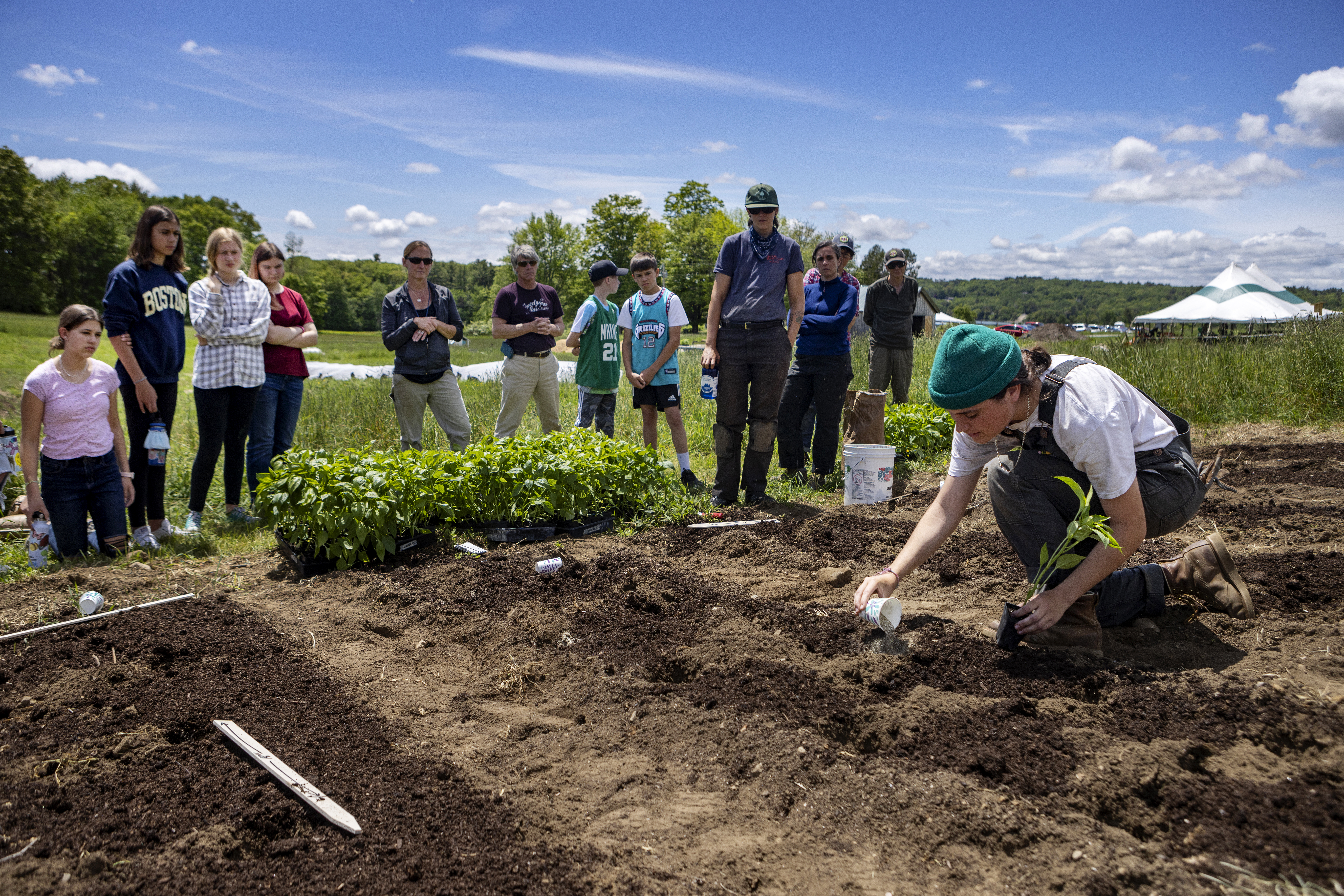
Becca Davies (right), farm crew at Twin Villages Foodbank Farm, demonstrates to seventh grade students at Great Salt Bay Community School how to properly plant peppers. Ashley L. Conti photo
Gleaning
Taft and her partner Sara Cawthorn started Twin Villages Foodbank Farm in Nobleboro in 2016 on three acres owned by the Coastal Rivers Conservation Trust. The farm partners with eight food pantries and organizations in Lincoln County to provide 50,000 pounds of fresh produce a year.
The farm's refrigerated hub offers a storage space for local food pantries that work from church basements with no place to store fresh produce. Students at nearby Great Salt Bay School help start seedlings in the greenhouse and come back later in the spring to plant as part of their science curriculum. Local volunteers help out on Tuesdays and Thursdays.
"This is really a community effort we feel like we're a part of," Taft said.
In 2021, MaineCF's Southern Midcoast Committee awarded Twin Villages Foodbank Farm $5,000 and a donor-advised fund awarded an additional $5,000 to grow its capacity to feed Lincoln County.
Backpack Programs
More than one-quarter of children attending school in Cumberland County are at risk of going hungry in the evening, over the weekend, and during summer break. The Locker Project partners with more than 40 schools, preschools, childcare facilities, and other agencies in Cumberland County to connect children and their families with reliable access to nourishing foods. When school is out for the summer, Locker Project staff and volunteers host free, fresh food events at summer meals sites and other convenient locations across Greater Portland.
"Summer can be a difficult time for families struggling to make ends meet," said Kathryn Sargent, executive director of the Locker Project. "We want to make sure children and their families can continue to enjoy nutrient-dense fruits and vegetables, including locally grown berries, greens, tomatoes, and other items." The Locker Project will host more than 80 food events again this summer to make sure children have the nutrition they need year-round.
MaineCF support for the Locker Project included $5,000 from the Rines Thompson Fund, $7,500 from the Edward H. Daveis Benevolent Fund, and $10,000 from the COVID-19 Emergency Response Fund.
Meal Programs
Table of Plenty is a community kitchen that offers weekly meals to about 200 people in Berwick and Kittery.
Volunteers provide healthy, home-cooked meals at no charge to anyone who requests them, regardless of their financial situation. Last summer three renowned chefs from Portsmouth and southern Maine partnered with the organization and offered up their talents to create gourmet, take-home meals each week. Entrees range from comforting beef stroganoff and shepherd's pie in colder months to lighter barbecue chicken and garden salads in the spring.
In 2021, Table of Plenty received a $9,666 grant from MaineCF's York County Committee to support its meal programs after the organization's clientele rose 37 percent during the pandemic.
Food Pantries
Area Interfaith Outreach Food & Energy Assistance (AIO) in Rockland has worked since 1990 to combat food insecurity in its community. The organization serves 4,000 households per year and 10,000 individuals use its food pantry.
The food pantry offers curbside pick-up on Mondays and Fridays, during which clients receive prepacked bags filled with groceries such as meat, dairy, produce, shelf-stable products, and personal hygiene items. On Wednesdays, AIO's market is open for grocery shopping.
AIO was awarded $4,000 from MaineCF's COVID-19 Emergency Response Fund, and in 2020 received $6,000 from the Knox County Committee to support its strategic planning work.
How You Can Help
To discuss how you can partner with MaineCF to help reduce food insecurity in Maine and learn about organizations in your interest area, existing donors should reach out to their staff contact. For further information, contact Laura Lee, vice president of community impact, llee@mainecf.org or (207) 412-0838.
Slideshow photo captions:
- Becca Davies (right), farm crew at Twin Villages Foodbank Farm, demonstrates to seventh grade students at Great Salt Bay Community School how to properly sow pepper plants at Twin Villages Foodbank Farm in Damariscotta. Ashley L. Conti photos
- Great Salt Bay Community School seventh grader Otto Hinck, 13, sows a pepper plant.
- Students from Great Salt Bay Community School sow and harvest produce as part of their science curriculum.
- The farm harvests more than 50,000 pounds of fresh produce per year.
- Regular community volunteers contribute to the farm's success.

